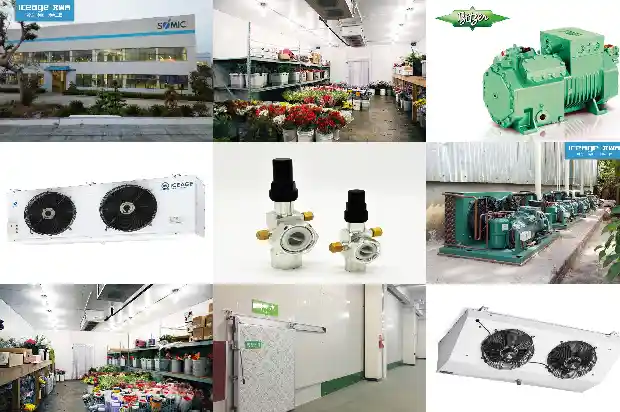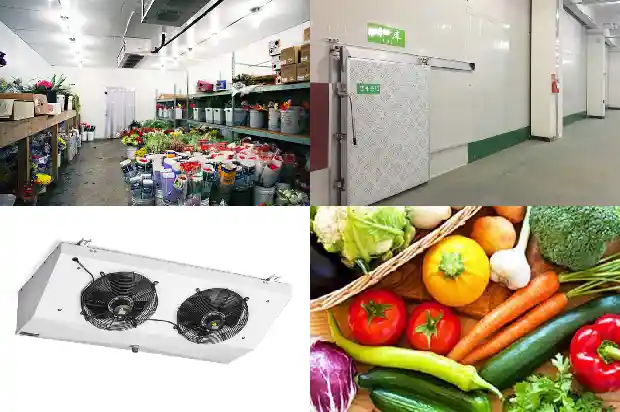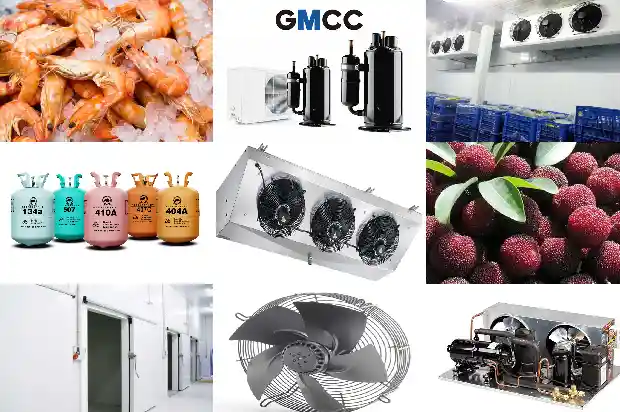How to Judge the Refrigerant Charge Amount?
2025-01-10
Generally speaking, for refrigeration equipment such as household air conditioners and central air conditioners, repairers don't need to worry about the refrigerant charging amount. Because refrigeration equipment undergoes performance tests before leaving the factory, and reference values for the refrigerant charging amount are provided.
Household refrigerators and air conditioners have refrigerant added in the factory using a quantitative fluorine - adding instrument. Some commercial refrigeration units also have refrigerant added in a fixed quantity before leaving the factory.
However, many large central air - conditioning units and industrial chiller units need to be charged with refrigerant on - site. Household air - conditioners, refrigerators, and other equipment also need on - site refrigerant charging during the repair process.
Some people may say, "Isn't this very simple? There are reference values for the charging amount on the equipment nameplate. As long as the refrigerant is charged according to the reference value, there will be no problem."
But for some equipment, due to the different types of evaporators used, the refrigerant charging amounts vary, and no reference values for the charging amount are given. Moreover, at the repair and installation site, due to conditional limitations, technicians often do not use a quantitative fluorine - adding instrument and are not accustomed to charging refrigerant by quantitative weighing. Because in most cases, the system has a partial refrigerant leak and needs to be replenished, and the amount of leakage cannot be accurately calculated. So, most of the time, refrigerant is charged based on experience.
In repair practice, improper refrigerant charging amounts often cause abnormal equipment operation. So, how to control the refrigerant charging amount, and what faults will be caused by improper charging amounts?
The following, the editor will introduce in detail how to judge the refrigerant charging amount for different types of units, as well as the problems caused by incorrect charging amounts and solutions.
2 Refrigerant Charging of Water - Cooled Chiller Units
In central air - conditioning and industrial production process cooling, water - cooled chiller units are commonly used. This type of unit integrates a compressor, a horizontal shell - and - tube condenser, a thermal expansion valve, a horizontal shell - and - tube evaporator, and necessary auxiliary components. It has a compact structure, convenient operation and control, and simple installation and debugging, and is popular in the market.
For a refrigeration system without a high - pressure receiver and a low - pressure vapor - liquid separator, the control of the refrigerant charging amount is particularly important. Because in this refrigeration system, the condenser also serves as a high - pressure receiver. If too much refrigerant is added, it will be stored in the condenser, submerging the condenser heat - dissipating cluster tubes, reducing the heat - dissipation area, increasing the condensing pressure, and resulting in a decrease in cooling capacity.
For the control of the refrigerant charging amount of this type of refrigeration unit, during the charging process, follow the following methods:
Household refrigerators and air conditioners have refrigerant added in the factory using a quantitative fluorine - adding instrument. Some commercial refrigeration units also have refrigerant added in a fixed quantity before leaving the factory.
However, many large central air - conditioning units and industrial chiller units need to be charged with refrigerant on - site. Household air - conditioners, refrigerators, and other equipment also need on - site refrigerant charging during the repair process.
Some people may say, "Isn't this very simple? There are reference values for the charging amount on the equipment nameplate. As long as the refrigerant is charged according to the reference value, there will be no problem."
But for some equipment, due to the different types of evaporators used, the refrigerant charging amounts vary, and no reference values for the charging amount are given. Moreover, at the repair and installation site, due to conditional limitations, technicians often do not use a quantitative fluorine - adding instrument and are not accustomed to charging refrigerant by quantitative weighing. Because in most cases, the system has a partial refrigerant leak and needs to be replenished, and the amount of leakage cannot be accurately calculated. So, most of the time, refrigerant is charged based on experience.
In repair practice, improper refrigerant charging amounts often cause abnormal equipment operation. So, how to control the refrigerant charging amount, and what faults will be caused by improper charging amounts?
The following, the editor will introduce in detail how to judge the refrigerant charging amount for different types of units, as well as the problems caused by incorrect charging amounts and solutions.
2 Refrigerant Charging of Water - Cooled Chiller Units
In central air - conditioning and industrial production process cooling, water - cooled chiller units are commonly used. This type of unit integrates a compressor, a horizontal shell - and - tube condenser, a thermal expansion valve, a horizontal shell - and - tube evaporator, and necessary auxiliary components. It has a compact structure, convenient operation and control, and simple installation and debugging, and is popular in the market.
For a refrigeration system without a high - pressure receiver and a low - pressure vapor - liquid separator, the control of the refrigerant charging amount is particularly important. Because in this refrigeration system, the condenser also serves as a high - pressure receiver. If too much refrigerant is added, it will be stored in the condenser, submerging the condenser heat - dissipating cluster tubes, reducing the heat - dissipation area, increasing the condensing pressure, and resulting in a decrease in cooling capacity.
For the control of the refrigerant charging amount of this type of refrigeration unit, during the charging process, follow the following methods:
- Touch the temperature of the condenser shell
The part above the liquid outlet of the condenser should be hot, and the part below the liquid outlet should be cool (hot indicates that there is high - temperature exhaust gas from the compressor condensing inside, and cool indicates that it is a liquid space inside). - Observe the suction pressure
It should correspond to the temperature of the refrigerant water in the evaporator (that is, correspond to the evaporation temperature). - Observe the temperature of the compressor return pipe
For high - temperature units, the return pipe should be cool and have dew condensation, but the dew condensation should only reach the compressor suction valve. For low - temperature units, the return pipe should be frosted, but the frost should only reach the compressor suction valve. If the dew condensation or frosting reaches the compressor housing, liquid refrigerant will enter the crankcase, causing compressor oil carry - over and liquid hammer. For hermetic compressors, it will also short - circuit the motor terminal. Although the terminal of most hermetic units is sealed with sealant, due to the uncertainty of the sealing effect, the possibility of short - circuit still exists.
3 Refrigerant Charging of Air - Cooled Chiller Units
Air - cooled chiller units are commonly used in household central air - conditioning and small - scale commercial refrigeration systems because they do not require a circulating water system. Due to the use of an air - cooled condenser, the control of its refrigerant charging amount is different from that of a water - cooled condenser. That is, during the charging process, touch the temperature of the radiator fins. In summer, during operation, the entire area of the radiator fins should be hot.
If the upper part is hot and the lower part is cool, it means that too much refrigerant has been charged.
The cool part stores liquid refrigerant. In winter, due to the low ambient temperature, even if the charging amount is normal, the lower part of the radiator may be cool, so this method cannot be used for judgment. Other characteristics are the same as those of water - cooled units.
4 Refrigerant Charging of Household Air - Conditioners
Household air - conditioners generally use forced - air - convection cooling for the evaporator, which has a fast cooling speed. The condenser uses air - cooling with forced - air - convection. Window air - conditioners have no external interface. During the repair process, the original refrigerant needs to be completely discharged and then re - charged.
Split - type air - conditioners all have external interfaces. In many cases, only part of the refrigerant needs to be replenished. During the process of adding refrigerant, the basic method to judge the charging amount is to observe the situation of the evaporator fins becoming cool or dewing.
Start the air - conditioner, observe while adding. When the entire surface of the evaporator becomes cool or dews, stop adding.
Otherwise, it will be over - charged. Of course, when the unit just starts, the heat - transfer temperature difference of the evaporator is larger, the vaporization speed of the refrigerant is faster, and the circulation volume is also larger. After the room temperature drops, the heat - transfer temperature difference of the evaporator becomes smaller, and the refrigerant circulation volume will decrease. There is no need to worry. There is a vapor - liquid separator on the air - conditioner compressor. When the room temperature is low, a small amount of excess refrigerant will be stored in the vapor - liquid separator, which has no impact on the operation of the compressor and the system. The charging amount should only be based on the circulation volume when the unit just starts to cool down.
5 Refrigerant Charging of Household Refrigerators
Household refrigerators do not have a movable external interface for adding refrigerant. After leak - repair or component replacement, refrigerant needs to be re - added. Since the refrigerator refrigeration system does not have a vapor - liquid separator or a receiver, and the final cooling temperature of the refrigerator is low, during the process of starting the unit and adding refrigerant, the temperature of the evaporator's working environment varies greatly between just starting and automatic shutdown, and the refrigerant circulation volume also varies greatly.
If the amount of refrigerant added is determined based on the condition that the entire surface of the evaporator becomes cool or frosted when the unit just starts, then at the end of cooling, the refrigerant circulation volume will be excessive. The suction pipe of the compressor outside the refrigerator will be frosted, and even the compressor housing will be frosted. This is not appropriate, as it will lead to cold - quantity loss, compressor oil carry - over, and even compressor damage due to liquid hammer.
In addition, the amount of refrigerant added to a refrigerator is not large, generally not exceeding 0.2 kilograms. So, when charging refrigerant into a refrigerator, don't be hasty. While starting the unit, slowly add refrigerant in gaseous form through the low - pressure process tube. Observe the pressure gauge indication and the working current of the compressor, and they should not be too large.
The fluorine - adding and debugging process of a refrigerator generally takes about two hours to complete (the cooling time varies depending on the ambient temperature). To facilitate the treatment of ice blockage, after normal fluorine - adding, the unit should be run for a test for 24 hours before sealing the process tube.
The refrigerant charging amount of a refrigerator should meet the following conditions:
a. The refrigerator can automatically stop.
b. During operation, the evaporators in the freezer and the refrigerator compartments can be fully frosted.
c. The return pipe of the compressor outside the refrigerator only has dew condensation and no frosting.
If you rush the process and charge the refrigerant until the entire evaporator becomes cool or frosted at the beginning, then at the end of cooling, the return pipe of the compressor will be frosted.
At this time, the excess refrigerant needs to be discharged, causing unnecessary waste. Moreover, if the initial charging amount is too large, the compressor will work under overload, and it is likely to trigger overload protection or burn out the compressor.
Next, let's take a look at the faults that occur in the refrigeration system due to incorrect refrigerant charging amounts and how to analyze them.
6 Insufficient Refrigerant Charging Amount
The parameter characteristics reflected by insufficient refrigerant charging amount in the refrigeration system are: - The evaporator is not fully frosted or dewed.
- The suction and discharge pressures of the compressor decrease.
- The suction temperature is on the high side.
- The working current of the compressor motor decreases.
- The operating sound of the compressor becomes lower.
The direct result is a decrease in the refrigeration efficiency of the unit, failing to achieve the expected refrigeration effect.
It is not difficult to judge insufficient refrigerant charging amount. It should be noted that blockage of the liquid supply pipeline (filter screen, capillary tube, etc.) and too small adjustment of the expansion valve can also cause the evaporator to be not fully frosted or dewed, resulting in a decrease in the unit's refrigeration effect. At this time, even if the refrigerant is excessive, the evaporator is still not fully frosted or dewed, and the suction pressure is low. This requires comprehensive analysis to find their different characteristics.
The blockage has other manifestations. Generally, the blockage point appears in the fine - passage section, that is, in places with a small diameter, such as the filter screen of the dryer and the expansion valve, and the capillary tube. These are the high - pressure parts of the refrigeration system, and they are normally at room temperature. If blocked, the part after the blockage point will become cold. The phenomenon is that there will be dew condensation or frosting after the blockage point. If the passage is not blocked, dew condensation or frosting should start from the back of the throttler.
Beginners often treat blockage as insufficient refrigerant and keep charging refrigerant. Not only will the evaporator never be fully frosted or dewed, but also fault characteristics of excessive refrigerant will appear.
7 Excessive Refrigerant Charging Amount
Excessive refrigerant charging amount has characteristic manifestations on both the evaporator and the condenser. If the throttler (capillary tube, throttle valve) cannot fully adjust automatically, then the liquid that cannot be completely evaporated after excessive liquid supply will return to the compressor, causing the compressor housing to be frosted or dewed.
If the throttler can fully adjust automatically, or the liquid supply amount of the expansion valve is manually reduced, then the frosting or dewing of the compressor return pipe is normal, and the excess liquid refrigerant will be stored in the high - pressure part. For a system without a high - pressure receiver, the excess liquid refrigerant will be stored in the condenser. At this time, the characteristic manifestations are an increase in condensing pressure, an increase in evaporation pressure and evaporation temperature, a decrease in refrigeration efficiency, a slow cooling speed, an increase in the unit's working current, and a dull working sound of the unit.
Of course, if there is a large amount of air in the refrigeration system, this characteristic will also appear, but they have other characteristic differences. That is, when the refrigerant is excessive, for an air - cooled condenser, the upper part of the radiator fins is hot, and the lower part is cool due to the storage of liquid. For a water - cooled condenser (horizontal shell - and - tube type), the heating area in the height direction of the shell - tube is small in the upper part, and the cooling area in the lower part is large due to the storage of too much liquid refrigerant. When there is air in the system but the refrigerant amount is normal, this characteristic does not exist.
Related Articles
- What to Consider When Replacing R22 with Refrigerant R404A?
- Introduction to Inspection and Handling Methods for Refrigerant Leak in Cold Storage
- Four Combustible and Explosive Refrigerants: Precautions When in Use!
- Characteristics and Differences among Water System, Air System and Refrigerant System
- How to Properly Extract Ammonia Refrigerant during Refrigeration Parts Repair
- Operating Principle and Standard Installation Steps of Multi - split Systems in Refrigerant Air - conditioning Systems
- Sensor for Refrigerant Leak Detection in Cold Chain Transportation
- Why Should Refrigerant Be Filled in Liquid Form? What Are the Filling Methods?
- What are the Cooling and Heating Pressures of an Air Conditioner? How to Calculate the Optimal Refrigerant Quantity?
- Maintenance Methods for Refrigerant Leak in Air - conditioner Outdoor Unit
- Operations and Precautions for Multi - split Air Conditioners: Blowing Debris, Air Tightness, Vacuum Drying, and Refrigerant Charging
- Multi-split air conditioner: Nitrogen charging for welding, pressure maintaining, vacuuming and refrigerant charging
- What Sensors Are Used for Leak Detection of R1234yf, the New Generation of Environmentally Friendly Refrigerant?
- How to Check Refrigerant Leakage in Air Conditioning System?
- Scheme for the Use and Safety of Ammonia Refrigerants
- Precautions for Replacing Refrigeration Compressor Refrigerant Oil
- Introduction to the Relationship between Refrigerants and Cold Storage Temperatures
- Determining the Adequacy of Refrigerant Dosage in Fluorine Refrigeration Systems
